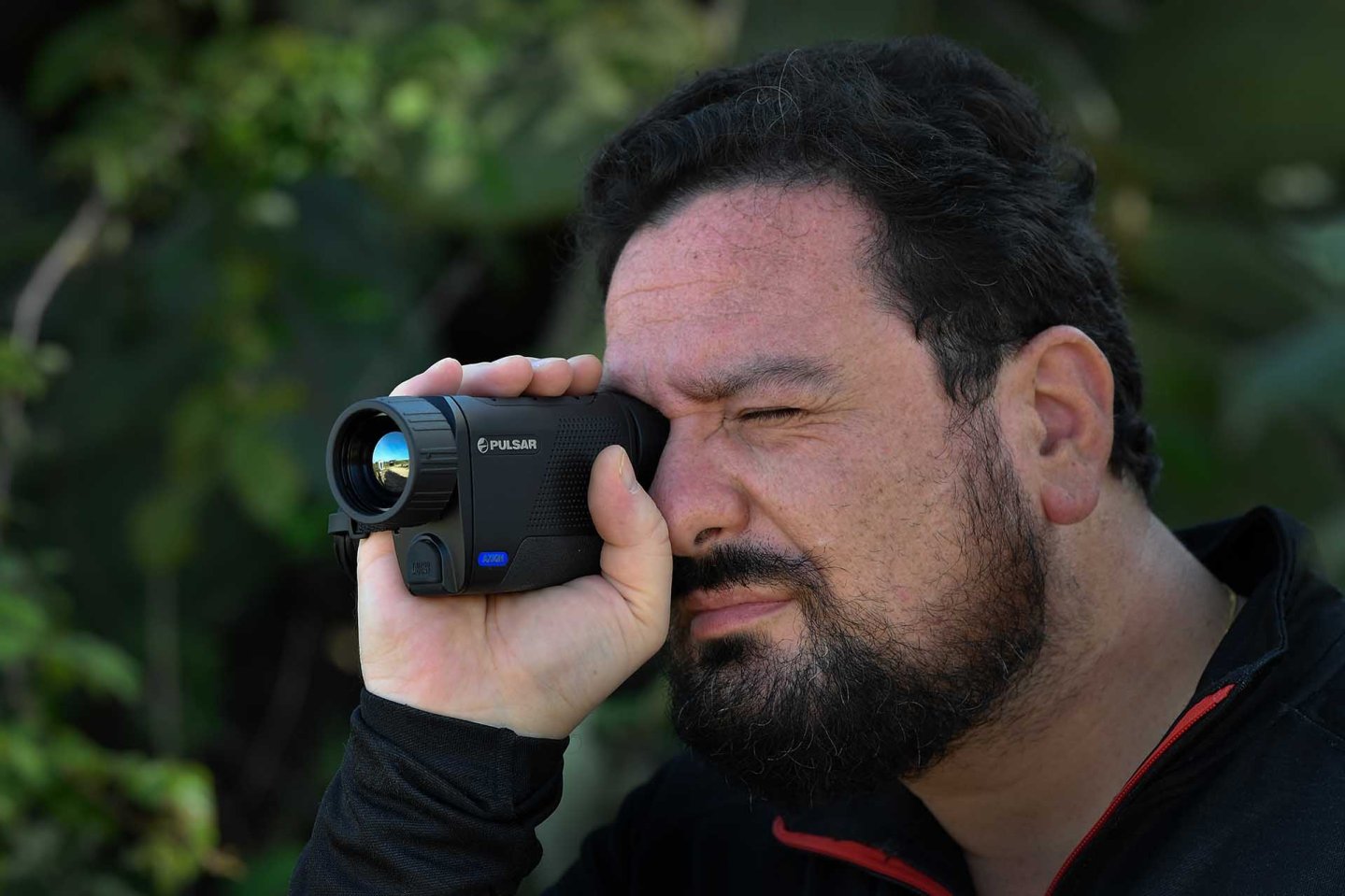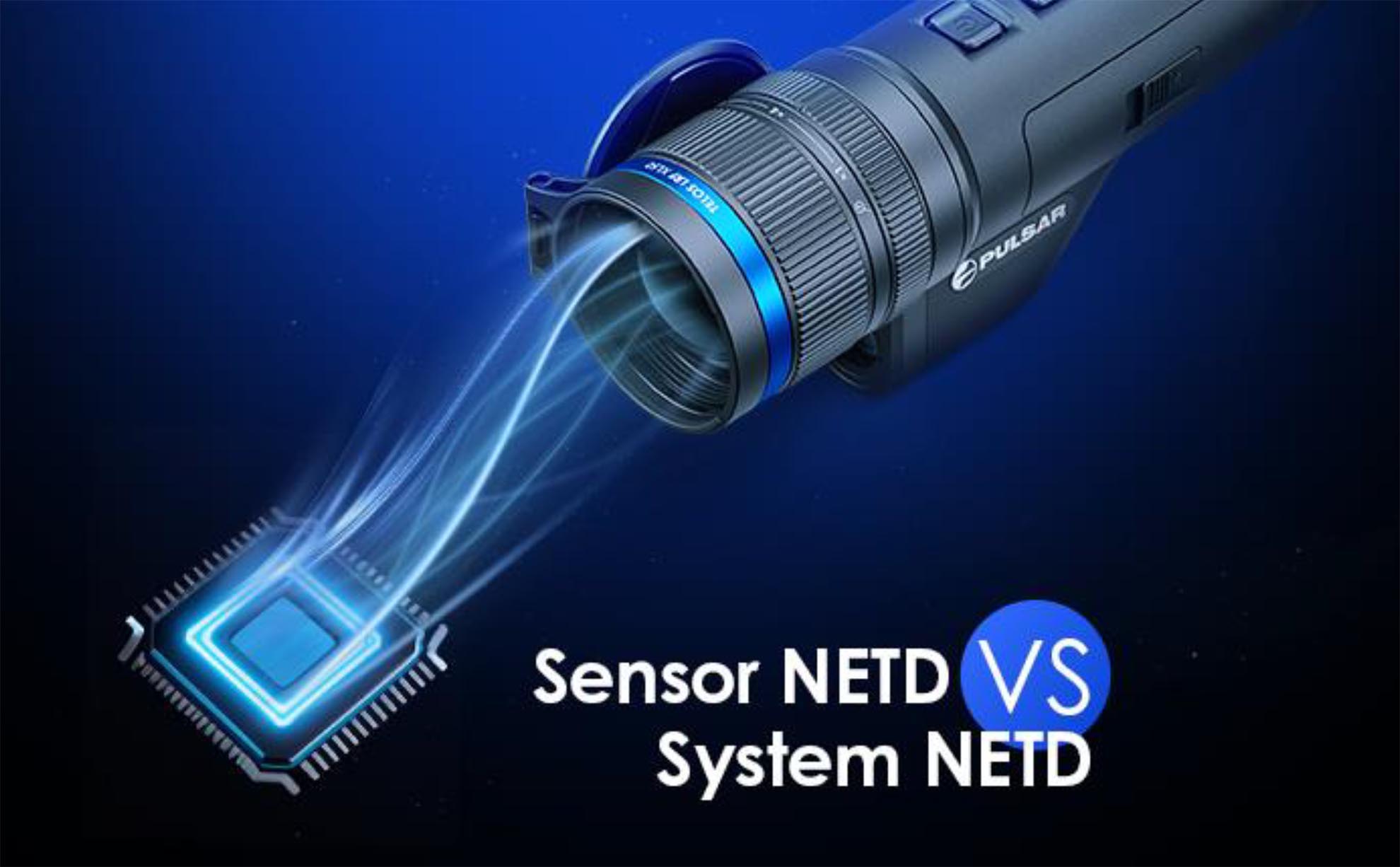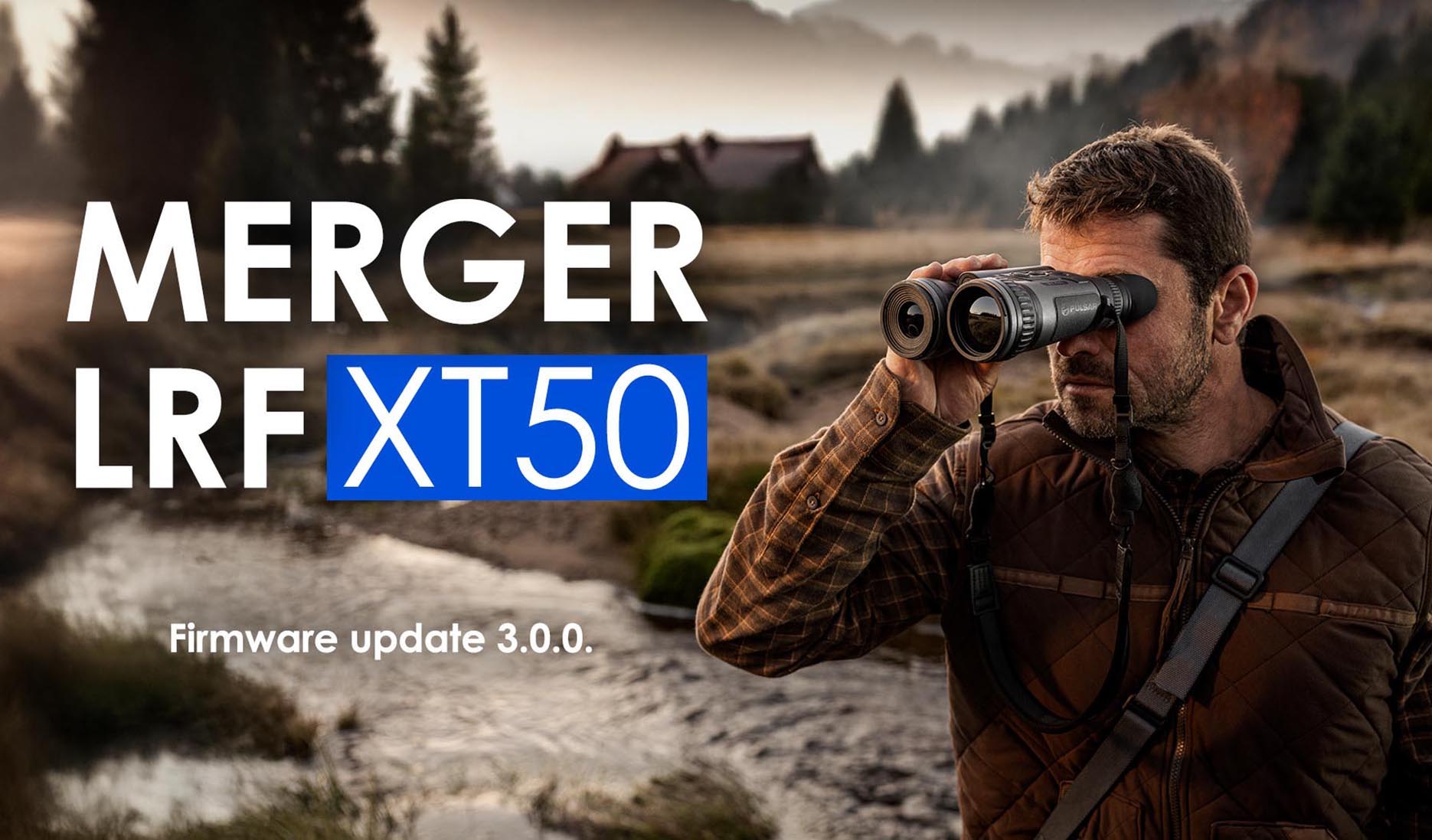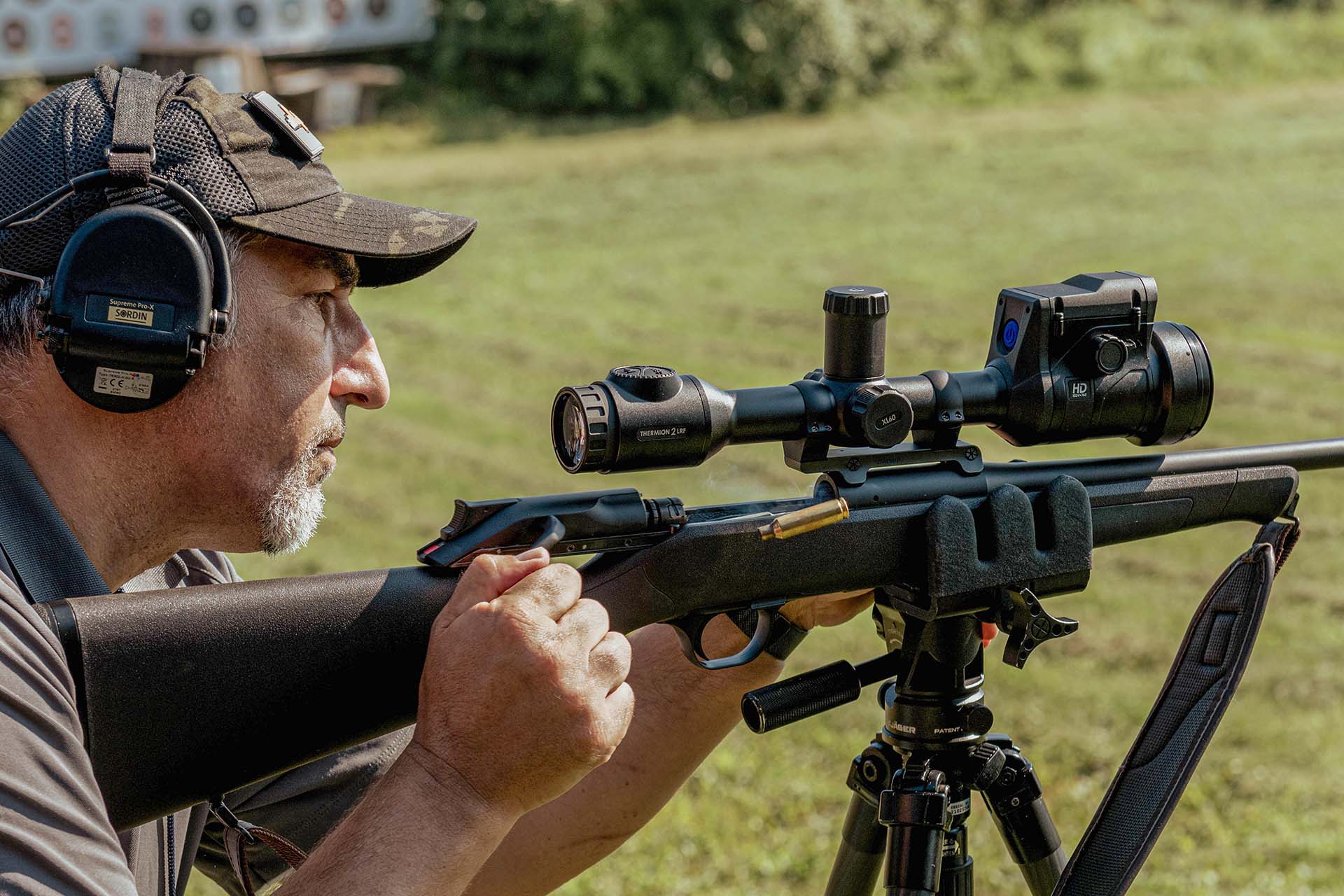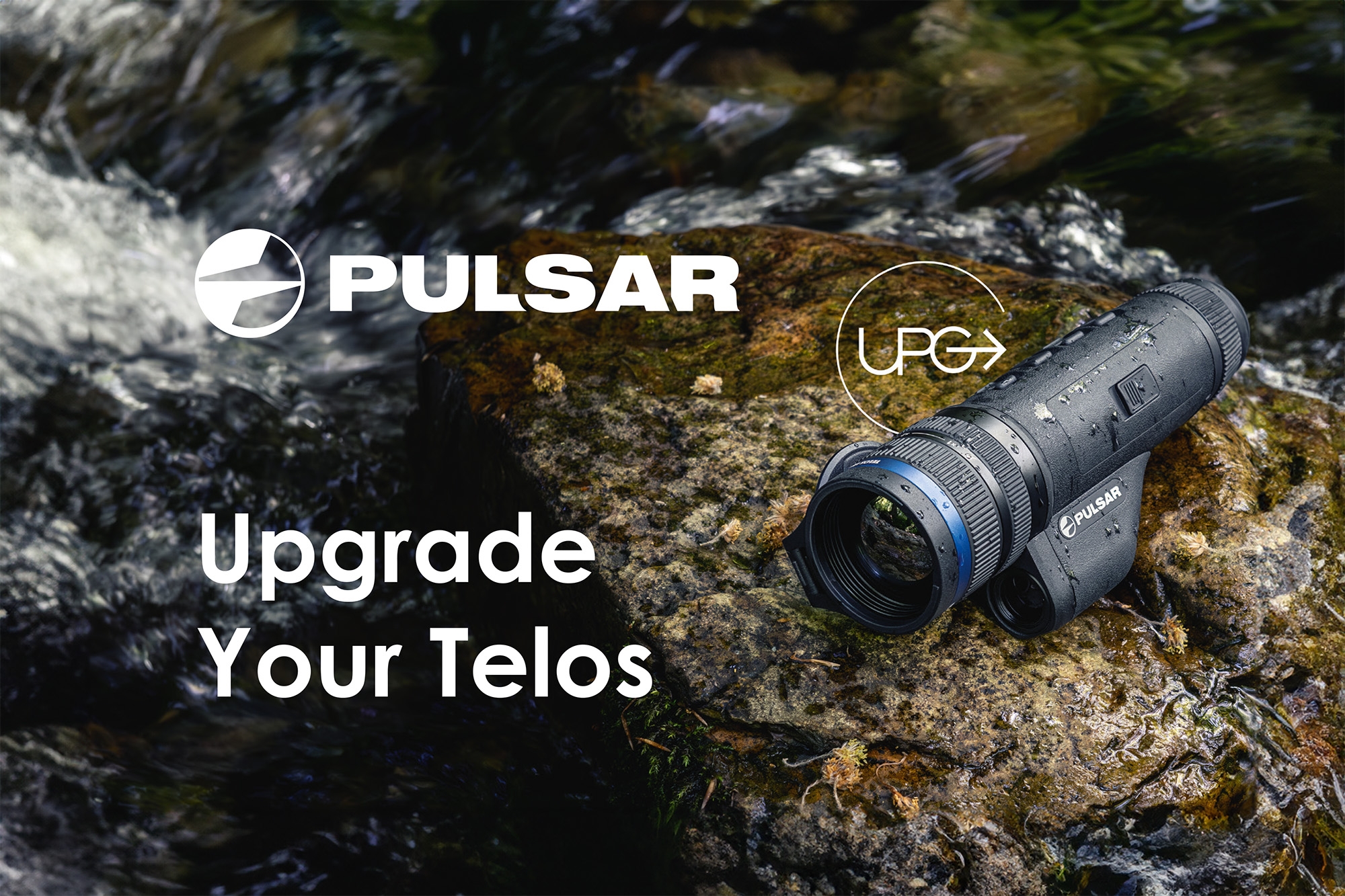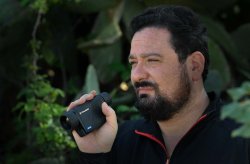
Presented in the summer of 2020, the new XQ series of thermal monoculars from Pulsar has been a very welcome addition to the Axion line, introducing the new high sensibility sensor technology to the budget line of thermal monoculars offered by the European manufacturer. The line also includes a version of the monocular sporting a Laser rangefinder. Today, we had the basic model to test, the Axion XQ38 3.5-14x32.
So, as we just mentioned, the XQ38 monocular features a 384х288 resolution focal planar array Amorphous Silicon microbolometer thermal sensor with 17µm pixel pitch and better than 40 mK NETD sensibility. The fast F1.2, 32mm diameter and 38 mm focal length coated Germanium objective lens of the Axion is natively capable of 3.5x magnification, that can be digitally zoomed up to 14x. Minimum focusing distance is 3 meters.

The redesigned eyepiece offers a 9.8° field of view, that translates to 17.2 m at 100 m; eye relief is 15 mm with an exit pupil of 3.5 mm, and there’s +4/-5 diopter adjustment range. But, many of the specs of the Axion XQ38 have been already detailed in our introductory article on the thermal monocular, so we will concentrate on the actual performance and experience.
First of all, the XQ38 feels “intense” in our hand. It is surprisingly hefty for the size, although it is not heavy by any standard – just 350 grams. The magnesium housing feels very sturdy and rugged, and transmits a sense of confidence and reliability. The controls layout is ergonomic and intuitive, only four buttons on top of the unit, that can be easily reached and operated with one hand, the one holding the unit. Focus and diopter adjustment rings are easy to use and offer just the right amount of resistance to be impervious to accidental change.
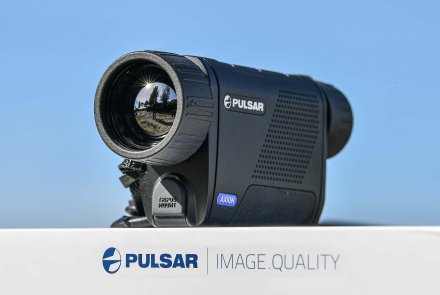
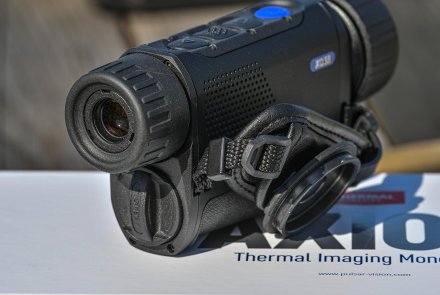
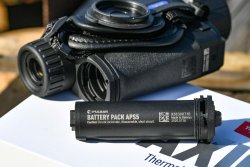
The objective cover is connected to the nylon strap and can be magnetically fastened to the camcorder style handstrap to be out of the way but still available to protect the front lens when needed. As with all other second-generation devices sporting the 40mK sensor, the Axion XQ features noticeably increased detection distances (for the XQ this distance is 1300 m), increased integrated video recording memory (16GB), picture in picture with 10% of the FOV window for zoomed images, and the usual wi-fi communication that includes Stream Vision app support and Firmware updates.
Battery replacement is fast and easy, and the compartment is self-sealing, to preserve the IPX-7 waterproof rating of the device; the Li-Ion 3.7V, proprietary APS5 battery pack has a 4900 mAh capacity, and allows for 6 hours of non-stop operation. External batteries, with an output of 5V, can also be used, connected to the Micro USB port – in this case, the internal battery is also recharged.
The tripod attachment point is located in front of the device, right under the objective, and is protected with a rubber cover. It cannot be used as is, and a 90° adapter is supplied with the monocular to be able to mount it on a standard 1/4"-20 threaded tripod head. It does, however, allow the optic to be rotated in various positions once fastened to the tripod.
The Pulsar Axion XQ38 in practice: experience of use
Operating the Axiom is extremely easy, the user interface is the same across many Pulsar thermal imaging products, so learning curve is pretty quick.
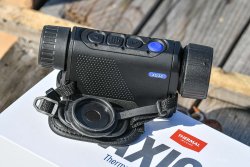
Turn on time is almost immediate, less than five seconds; a brief press of the power button turns off the eyepiece display, so no light can escape from it in total darkness. The eyepiece is clear and very sharp across the whole area of the microdisplay: not very forgiving if you use goggles or prescription glasses, a small portion of the display may not be visible. However, the diopter ring is precise and has a good adjustment range.
What does a NETD of better than 40mK translates to in real world? Well, for example, it allows for a positive recognition of facial features, and in hunting, a better identification of the game. Obviously, a huge amount of details become visible due to the better dynamic range offered by the sensor, and subtle temperature changes are instantly visible. Animals and people stand out from the environment, and contrast is increased, however smoothness of the greyscale shading is kept, the image seems simply clearer and sharp.
A result of the difference between the actual resolution of the sensor and the higher resolution of the display, plus processing of the image by the Detail Boost algorithm tend to give a slight microedge “fuzziness” that becomes visible using the higher up digital zoom values.
Video: Pulsar Axion XQ38 thermal imaging monocular
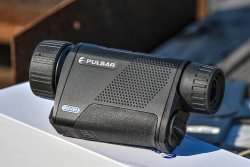
Pulsar Axion XQ38 test wrap-up
MSRP for the for the Axion XQ38 is 1990 euro, a very affordable price for a thermal imaging product. In our opinion, the XQ38 is somewhat the sweet spot between affordability, performance and overall quality, in other words the most “bang for the buck” for whoever is shopping for a budget thermal imaging viewing device.
Although Pulsar markets this small thermal monocular as a hunting observation optic – which can also record video and connect to our smart devices, in reality the XQ38 can be handily used for a huge amount of different other applications, in every field where a general thermal imaging optic can be needed, and we highly recommend it.
For more information about the Axion XQ38 and the LRF XQ38 3.5-14x32 please visit the Pulsar website.
We explained the 40 mK NETD sensor again in detail in the test of the Pulsar Helion 2 XP50.
The predecessor Pulsar Axion XM38 can be found here. And here you can read the review of the more compact Pulsar XM30S.


